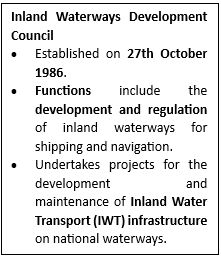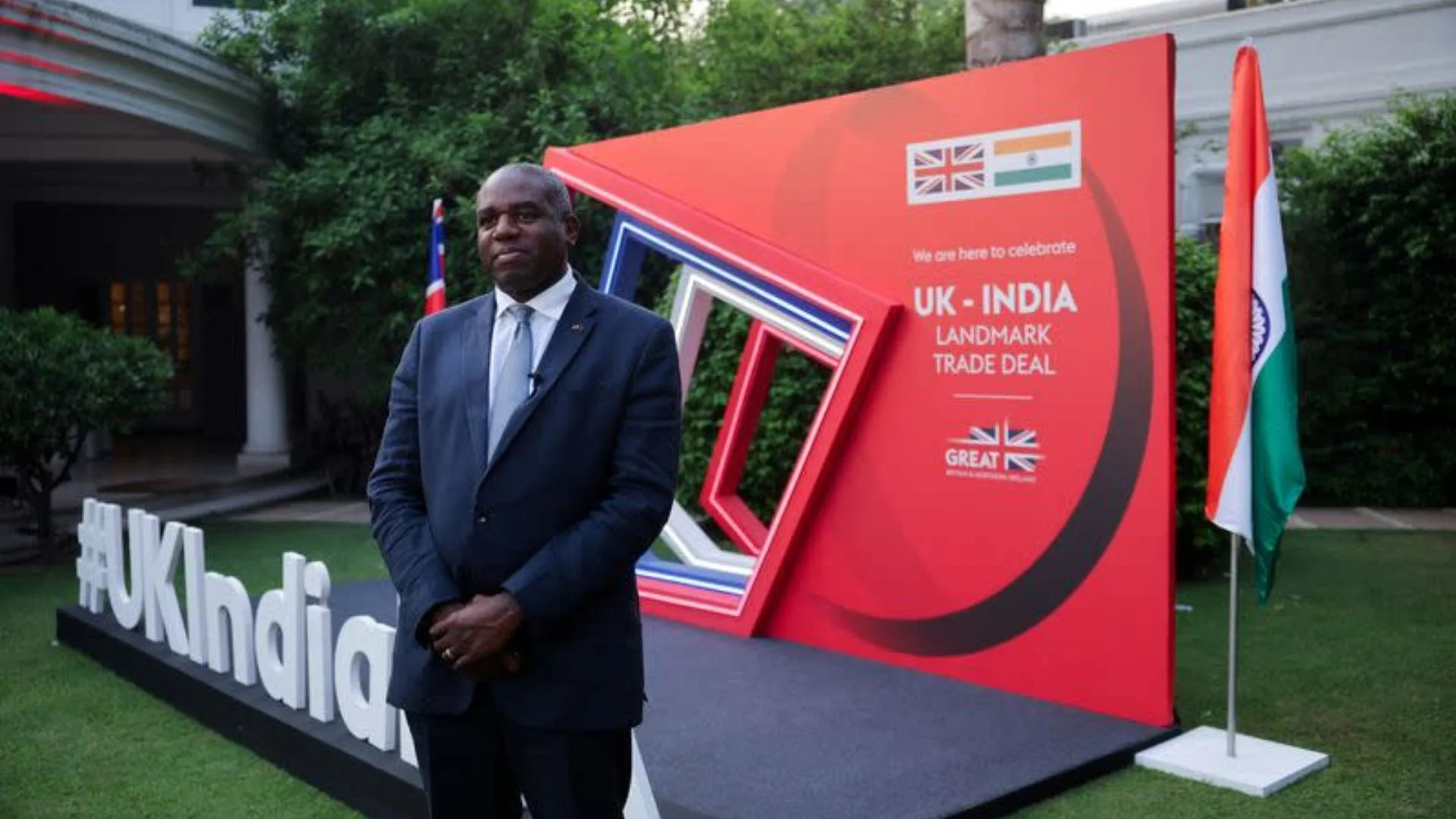- Courses
- GS Full Course 1 Year
- GS Full Course 2 Year
- GS Full Course 3 Year
- GS Full Course Till Selection
- MEP (Mains Enrichment Programme) Data, Facts
- Essay Target – 150+ Marks
- Online Program
- GS Recorded Course
- NCERT- First Ladder
- Polity
- Geography
- Economy
- Ancient, Medieval and Art & Culture AMAC
- Modern India, Post Independence & World History
- Environment
- Governance
- Science & Technology
- International Relations and Internal Security
- Disaster Management
- Ethics
- Current Affairs
- Indian Society and Social Issue
- CSAT
- 5 LAYERED ARJUNA Mentorship
- Public Administration Optional
- ABOUT US
- OUR TOPPERS
- TEST SERIES
- FREE STUDY MATERIAL
- VIDEOS
- CONTACT US
Inland Waterways Development in India/ Inland Waterways Development Council (IWDC)
Inland Waterways Development in India/ Inland Waterways Development Council (IWDC)
10-01-2024
Context
- Inland Waterways Development Council (IWDC), initiated in October 2023, aims to enhance Inland Water Transport (IWT) in India.
- Chaired by the Union Minister for Ministry of Ports, Shipping, and Waterways, with participation from State Governments/UTs.
Objectives of IWDC
- Boost cargo, passenger movement, and river cruise tourism in India.

- Enable inland waterways as conduits for economic growth and commerce.
Major Outcomes of IWDC Meeting
- Harit Nauka Guidelines: Introduced for the Green Transition of Inland Vessels.
- Commitment of Rs 45,000 crore: Made for the development of River Cruise Tourism.
- River Cruise Tourism Roadmap, 2047 launched.
- An investment of ₹15,200 crore for cargo trade to achieve a volume of 500 Million Tonnes Per Annum (MTPA) by 2047.
- An estimated ₹35,000 crore for cruise vessels and ₹10,000 crore for cruise terminal infrastructure by 2047.
Inland Water Transportation (IWT)
- Provides an opportunity to promote the use of electric, hybrid, hydrogen, and derivative propulsion fuels.
- Deployed eight electric catamaran vessels strategically for pilgrimage tourism.
Significance of Inland Water Transport (IWT)
- Transforming Logistics: Offers low costs, greater fuel efficiency, etc.
- Decongesting Road-Rail Transport: Provides an effective alternative mode of transportation.
- Regional Connectivity: Plays a crucial role in connecting the north-eastern states to the rest of India.
- Cargo Handling: IWT handles around 55 million tons of cargo annually, providing a fuel-efficient and environmentally friendly transportation mode.
Initiatives for Inland Water Transport
- Jal Marg Vikas Project: Focuses on the development of the Ganga-Bhagirathi-Hooghly river system (NW 1), emphasizing cargo and passenger ferry.
- National Waterways (NWs): Out of 111 notified NWs, 23 are operational, facilitating shipping and navigation.
- Maritime India Vision 2030: Aims to increase the modal share of IWT from 2% to 5%.
- Maritime Amrit Kaal Vision 2047: Represents India's development potential in its coastline, inland waterways, and coastal districts.
- Identifies 46 initiatives for IWT development, including port-based agglomeration centers and coastal berths.
- Aims for a cross-sectoral multiplier effect on inclusive growth and employment.
- Key Initiatives for Modal Share Enhancement:
- Creation of port-based agglomeration centers.
- Creation of coastal berths near coast-based production/demand centers.
- Road/Rail/IWT connectivity/expansion projects.
Must Check: Best IAS Coaching In Delhi
India’s EV Mission: Progress Delayed, Not Denied
India’s EV Mission: Progress Delayed, Not Denied


